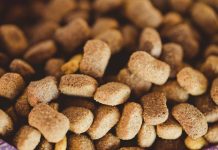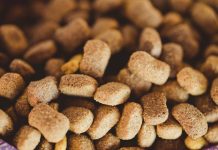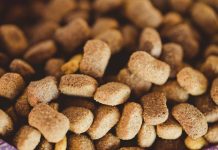When welcoming a new puppy into your home, ensuring their health and happiness quickly becomes a top priority. Among the myriad of decisions new pet owners face, choosing the right food can be one of the most important yet perplexing. With the growing popularity of grain-free diets, many dog owners find themselves wondering: Is grain-free puppy food better for your dog? This question, while seemingly simple, involves understanding the nutritional needs of your puppy and the potential benefits and drawbacks of grain-free options. In this article, we’ll guide you through the essentials of puppy nutrition, explore the reasons behind the grain-free trend, and provide insights to help you make an informed decision tailored to your furry friend’s well-being. Whether you’re a first-time puppy parent or an experienced dog owner, our goal is to offer you a warm, informative perspective on navigating this important aspect of your puppy’s life.
Understanding the Nutritional Needs of Your Growing Puppy
Choosing the right diet for your puppy is crucial to their development, and understanding their nutritional needs is key to making informed decisions. Puppies require a diet rich in proteins, fats, vitamins, and minerals to support their rapid growth and energy levels. When it comes to grains, opinions vary. Some argue that a grain-free diet can be beneficial for puppies with specific allergies or intolerances, but it’s essential to remember that grains can also be a valuable source of carbohydrates and fiber.
- Protein: Essential for muscle development and overall growth.
- Fats: Provide energy and support brain development.
- Carbohydrates: Offer a quick energy source; grains can be a part of this.
- Vitamins and Minerals: Crucial for bone health and immune function.
While grain-free puppy food can be an option, it’s important to consult with a veterinarian to ensure your puppy’s diet meets their specific needs. Each puppy is unique, and what works for one may not be suitable for another. Ultimately, a balanced diet tailored to your puppy’s growth stage will set the foundation for a healthy, happy life.

Exploring the Benefits and Drawbacks of Grain-Free Diets
When considering a grain-free diet for your puppy, it’s essential to weigh both the potential benefits and drawbacks. On the plus side, grain-free foods often contain higher amounts of protein and are free from common allergens such as wheat, corn, and soy. This can be particularly beneficial for puppies with sensitive stomachs or food allergies. Additionally, grain-free diets tend to include a variety of nutrient-rich vegetables and fruits, which can contribute to a more balanced and nutritious diet.
- Pros:
- Higher protein content
- Free from common allergens
- Includes nutrient-rich vegetables and fruits
- Cons:
- Can be more expensive
- May lack certain nutrients found in grains
- Potential link to heart issues in dogs
However, it’s important to be aware of the potential downsides. Grain-free diets can be more expensive and might lack some nutrients that grains provide. Moreover, recent studies have suggested a potential link between grain-free diets and heart issues in dogs, although more research is needed to fully understand this connection. Always consult with your veterinarian to ensure that a grain-free diet is the right choice for your furry friend.

Key Ingredients to Look for in Puppy Food
When selecting food for your puppy, it’s essential to consider the ingredients that will support their growth and health. Look for foods rich in high-quality proteins like chicken, lamb, or fish, as these provide the essential amino acids necessary for building strong muscles. Healthy fats such as omega-3 and omega-6 fatty acids are also crucial for brain development and a shiny coat.
- Calcium and Phosphorus: These minerals are vital for developing strong bones and teeth.
- Antioxidants: Ingredients like blueberries, cranberries, and spinach can boost the immune system.
- Whole Grains or Alternatives: If opting for grain-inclusive diets, ensure they include whole grains like brown rice or oats for energy. Alternatively, look for grain-free options with sweet potatoes or peas as carbohydrate sources.
- Probiotics: These support digestive health and can prevent upset stomachs.
Paying attention to these ingredients can ensure your puppy receives a balanced diet that promotes healthy growth and overall well-being.

Expert Tips for Transitioning Your Puppy to a New Diet
Transitioning your puppy to a new diet can be a seamless process with a little planning and patience. Start by introducing the new food gradually. Over a week, mix the new grain-free food with the old one, increasing the new food’s portion each day. This helps your puppy’s digestive system adjust without causing discomfort. Watch for any signs of allergies or digestive issues, such as itching or loose stools, as these might indicate that the new food isn’t a good fit.
- Monitor Your Puppy: Keep an eye on your puppy’s energy levels and coat condition. A shiny coat and active behavior are good signs of a healthy diet.
- Consult Your Vet: Always consult with your veterinarian before making significant changes to your puppy’s diet to ensure it meets all their nutritional needs.
- Stay Consistent: Puppies thrive on routine, so try to feed them at the same times each day to establish a stable feeding schedule.
















